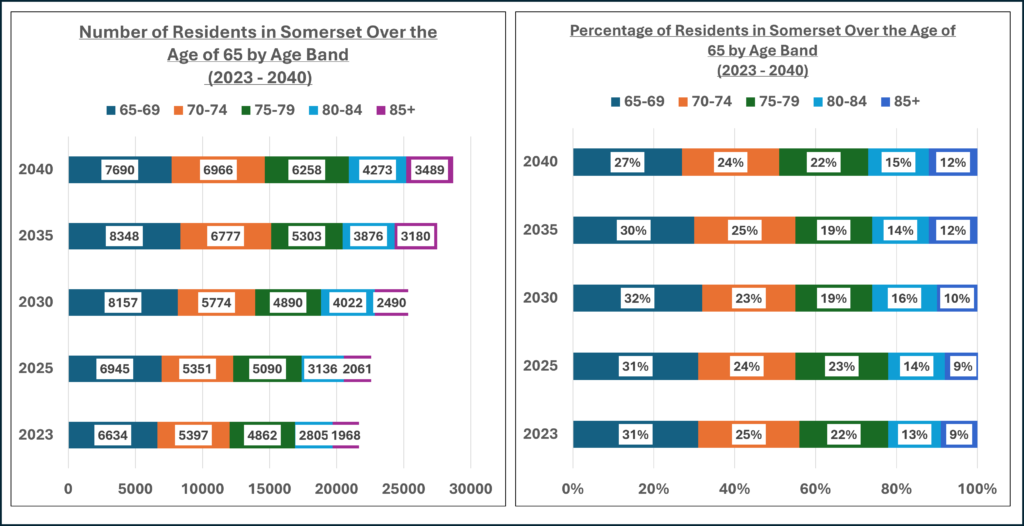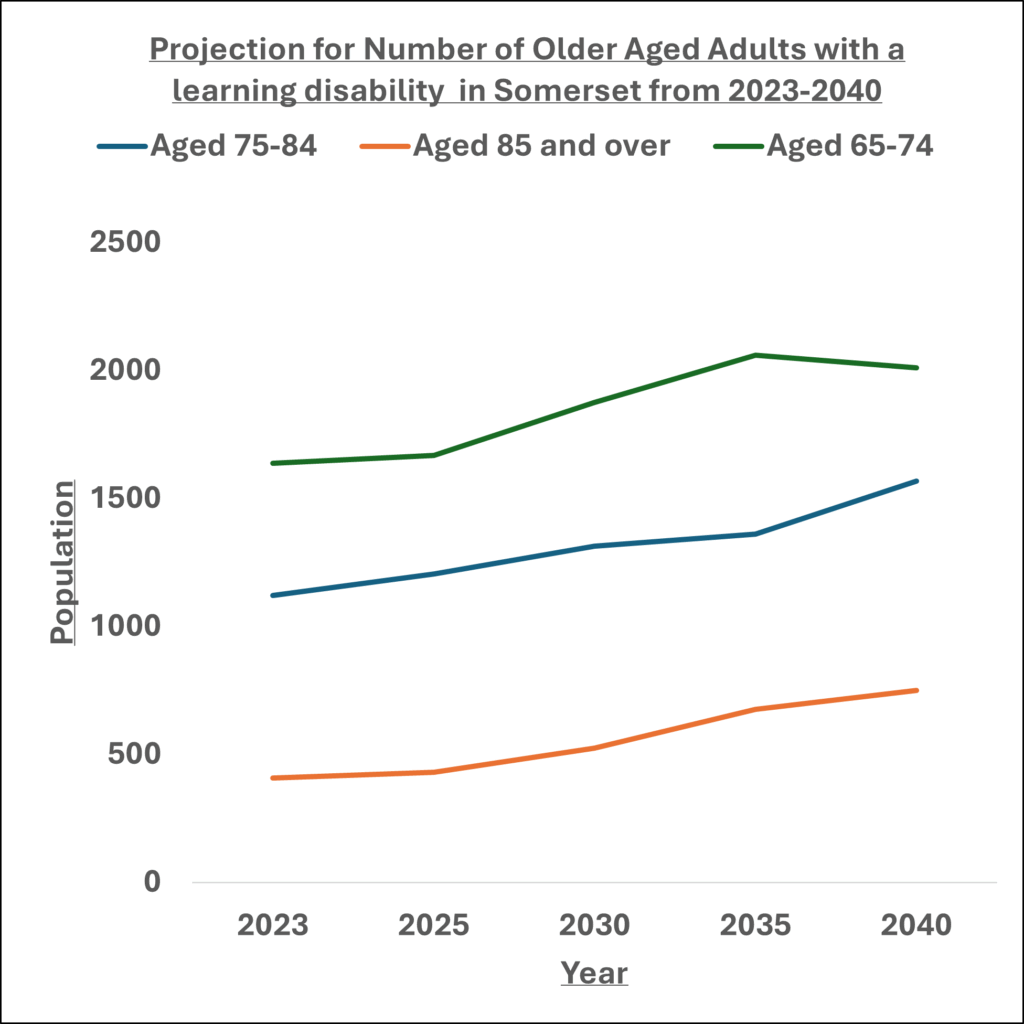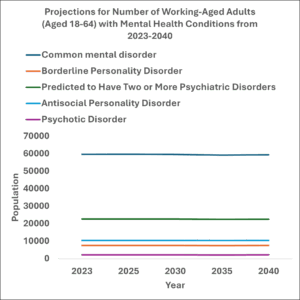Older Adults
Somerset’s Ageing Population
Somerset’s population is ageing and it is forecast to continue to age into the future. Numerous factors can influence an ageing population, for example: young people leave the county to access higher education or employment opportunities, and internal migrants moving to Somerset to retire.
Figure 1 shows how the population of older-aged adults (aged 65+) are forecast to increase by 28% between 2023-2040, and those over the age of 85+ nearly double from 2023-2040.

Figure 1: Population Projections for Older-Aged Adults in Somerset from 2023-2040 (Source Data: POPPI)
Older Aged Adults Who Need Help with Self-Care or Domestic Tasks
The number of adults aged 65+ who require support with at least one selfcare activity, or at least one domestic task is projected to increase by 42.2 % up to 2040 (Figure 2).

Figure 2: POPPI: Projections for Number of Older Aged Adults Who Need Help With One Self-Care Activity or Domestic Task.
Older Adults with Dementia
We expect to see a significant increase in the number of of older adults with a dementia between 2023 and 2040.

Figure 4: POPPI: Projections for Number of Older Aged Adults with Dementia (2023 – 2040)
Older Adults with Autism
The number of older-aged adults (65+) with Autism is forecast to increase up to 2040 with an 18.5% increase for individuals aged 65-74, (751 to 890) and a 50.7% increase for individuals aged 75+ (697 to 1051) (Figure 4).

Figure 4: POPPI: Projections for Number of Older Aged Adults with Autism (2023 – 2040)
Older Adults with a Learning Disability
The number of older-aged adults (65+) with a learning disability is forecast to increase up to 2040 with a 20.6% increase for individuals aged 65-74, (1668 to 2012) and a 40% increase for individuals aged 75-84 (1121 to 1569) and a 84% increase for individuals aged 85+ (409 to 750) (Figure 4).

Figure 5: POPPI: Projections for Number of Older Aged Adults with a learning disability (2023-2040)









